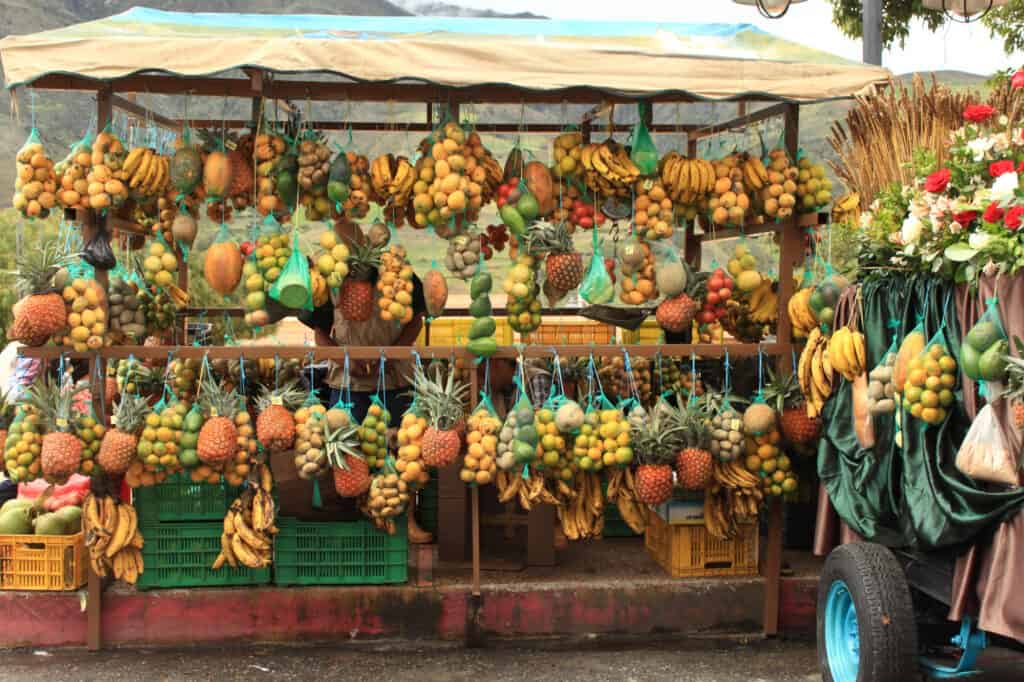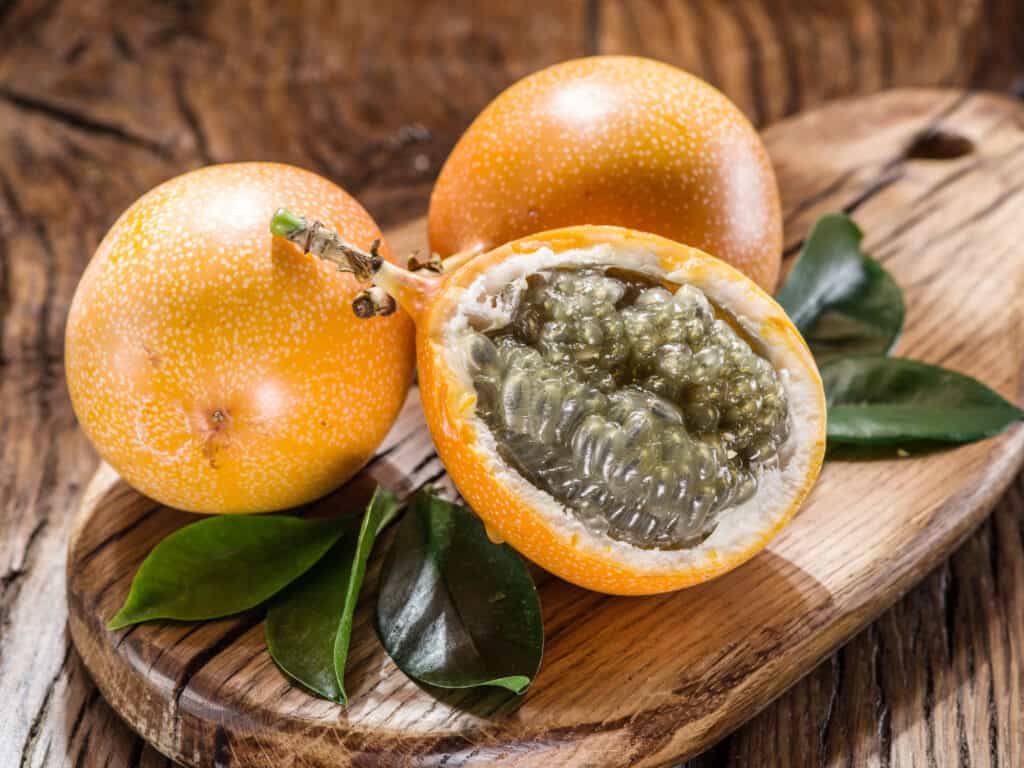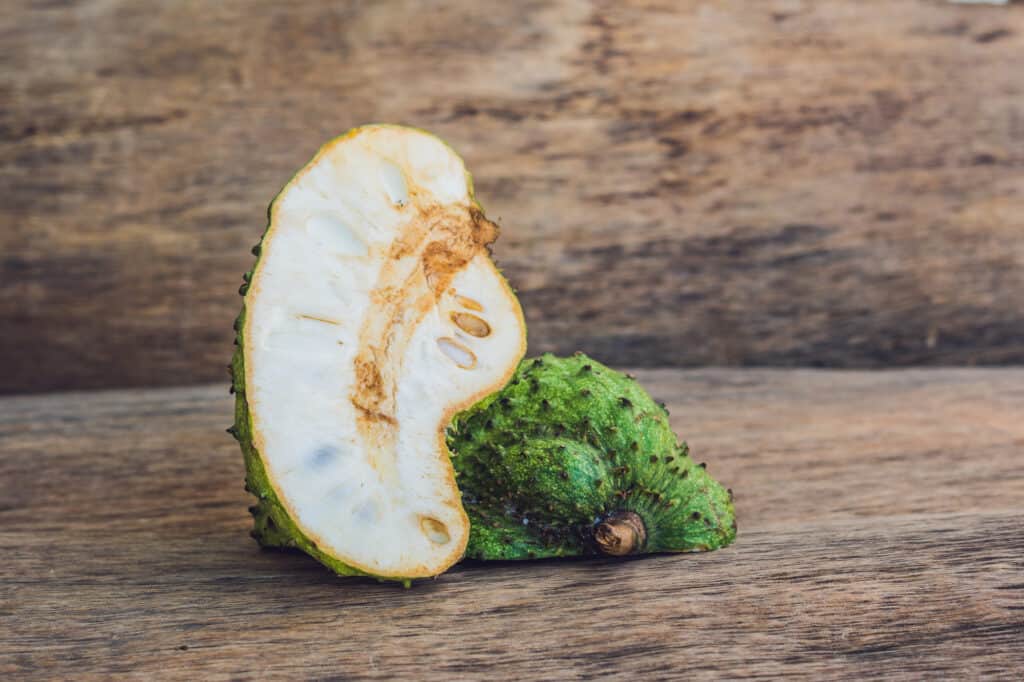For a true taste of the tropics, explore the unique and delicious flavors of Colombian exotic fruit like lulo, pitaya and guanábana.

Colombia, known for its rich biodiversity, is home to an incredible variety of exotic and tropical fruits. These fruits not only offer an unusual taste experience but also provide a range of nutritional benefits that are gaining worldwide attention.
While many Colombian exotic fruits are relatively unknown outside the region, they are considered staples within Colombian cuisine.
From the bustling markets in the cities to the fertile lands in the countryside, Colombia’s exotic fruits are a testament to the country’s abundant natural resources and culinary traditions.
Popular Colombian fruits

Lulo
Lulo is a popular Colombian fruit that can be found across the country. This distinctive citrus fruit is often used in juices and desserts. It has a tangy, slightly acidic taste that makes it a favorite among locals and visitors to Colombia alike.
Uchuva
Another popular Colombian fruit is the “uchuva,” the golden berry. This small, round fruit is covered in a papery husk and has a sweet and sour flavor. It is commonly eaten fresh but can also be used in salads, desserts and preserves.
The passion fruit family

Gulupa, granadilla and curuba are types of passion fruit native to Colombia.
Maracuyá, most commonly known as passion fruit, is a popular fruit in Latin cuisine with a tangy, refreshing taste. It can be found in various forms, such as juices, desserts and even sauces.
Gulupa has a sweet, tangy flavor and is packed with nutrients, making it a favorite among health-conscious consumers. Granadilla is related to the passion fruit family but has a sweeter taste and a distinctive appearance with its orange, shell-like exterior. Finally, curuba, also called banana passion fruit, has an oval shape and tart flavor.
FDL’S 75 Best Bites
Our cookbook with 75 tasty recipes will be your go-to kitchen companion for easy dinners with ad-free recipes right at your fingertips. Crafted by experienced chefs and recipe developers, this collection offers a treasure trove of tried-and-true dishes that make mealtime a breeze.
Get the Recipe: FDL’S 75 Best Bites
Tamarind
Tamarind is a popular fruit in Colombia, where it is known as “tamarindo.” It is often used in traditional Colombian dishes to add a tangy and sour flavor. Tamarind is also used to make refreshing beverages, including tamarind juice and tamarind cocktails. It is a good source of antioxidants, fiber, and minerals and has been used in traditional medicine in Colombia to treat digestive issues and fever.
Guanabana
Soursop, known as guanabana in Colombia, is a large, green spiky fruit with a white, creamy, tangy pulp. The fruit has a slightly slimy texture and is often used in smoothies and ice creams, providing a refreshing and tropical taste.
“I first tried soursop in the form of ice cream and immediately fell in love with its tangy sour taste. A traditional meal at a local’s house on that trip showcased the fruit in a punch which I love recreating at home any time I can find it locally.”
— Gina Matsoukas, Running to the Kitchen
Mangosteen
Usually associated with Asian cuisine, mangosteen is a hard-to-find, delicate fruit with a sweet, aromatic flavor. It has a purple shell and a white middle that’s made up of four parts. Its white, juicy flesh is highly sought after and considered a luxury.
Chontaduro
Chontaduro is a palm fruit commonly found in Colombia’s Pacific region. It is often boiled or roasted, and its starchy texture is reminiscent of a potato.
Zapote
Zapote, also known as sapodilla, has a creamy texture and a sweet flavor that is often compared to caramel or brown sugar. Zapote is a versatile fruit that can be used in a variety of dishes, from sweet desserts like pies and ice creams to savory dishes like stews and curries. It is also a popular ingredient in milkshakes and smoothies, adding a rich and creamy texture to the drink.
Pitaya
Colombian dragon fruit, also known as pitahaya, is a brightly colored, exotic fruit with a floral flavor. While Asian dragon fruit is often pink on the inside, Colombian pitaya is yellow on the exterior and white inside, with a mild, delicate flavor that lends itself well to salads, tropical overnight oats and smoothies.
Feijoa
Feijoa is another example of Colombia’s diverse fruit selection. Feijoa is a green, egg-shaped fruit with a sweet, aromatic flavor that has gained popularity in recent years.
Mamoncillo and nispero
Other noteworthy Colombian fruits include mamoncillo, a small, green fruit with a juicy, tangy taste and nispero, which has a sweet, buttery texture.
“I once spent several weeks in Colombia and I’m fairly certain I ate my weight in fruit. Granadilla, in particular, stands out in my mind. It was always so fresh, juicy, and sweet.”
— Kristen Wood, MOON and spoon and yum
Unique features
Colombian exotic fruits boast a variety of unique features, which make them not only visually interesting but also beneficial to our health.
For example, “guanábana,” also known as soursop, is known for its potential cancer-fighting properties and its ability to aid digestion, acting as a natural sedative that can help with tension.
Another notable Colombian fruit with health benefits is the golden berry or “uchuva.” This small, bright yellow fruit tastes like a pineapple and tomato combination. Enclosed in a papery husk, the golden berry is praised for its anti-inflammatory benefits and potential to regulate blood pressure.
Borojó, a distant cousin of the passion fruit, has a strong earthy flavor. It is rumored to be a natural aphrodisiac and can be found in traditional Colombian remedies and energy drinks.
Wrapping up
Colombian street food is a fantastic way to taste the culture and diversity of Colombia’s cuisine and its people. Whether you are looking for something savory, sweet or spicy, there is always something to satisfy your cravings in the lively streets of Colombia.
Ksenia Prints is a food writer, blogger, photographer and recipe developer from Montreal, Canada. She blogs over At the Immigrant’s Table, a food blog showcasing healthy, beautiful international recipes for adventurous home cooks. She loves to highlight ethnic cuisines and immigrant cultures by working with chefs from relevant countries and to adapt those recipes to gluten free, vegan, vegetarian, sugar free and other dietary restrictions.



